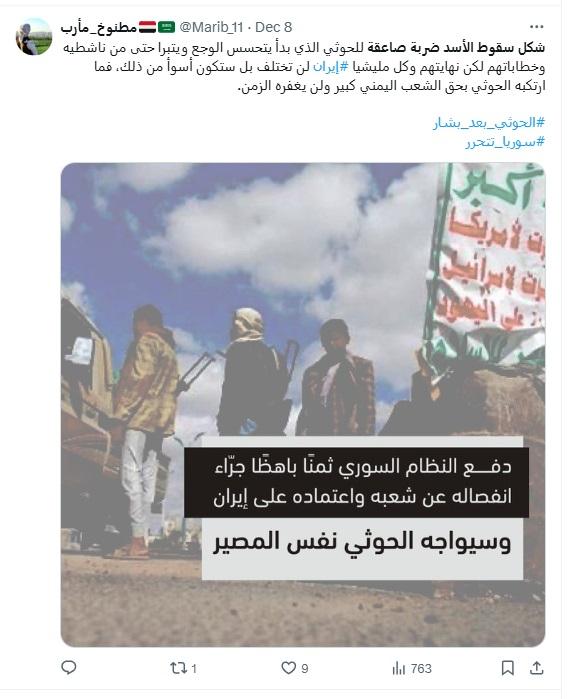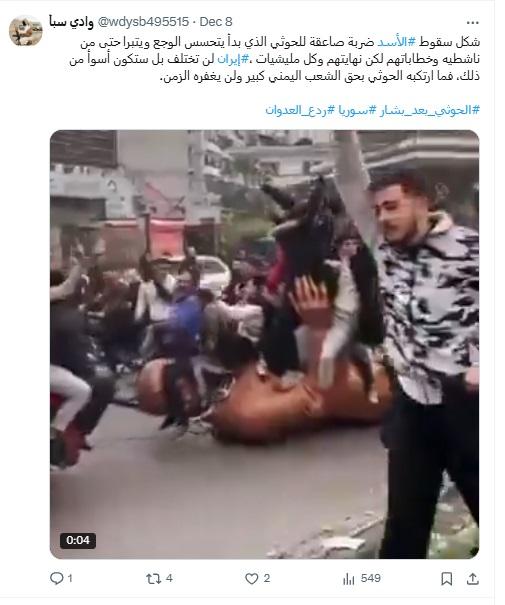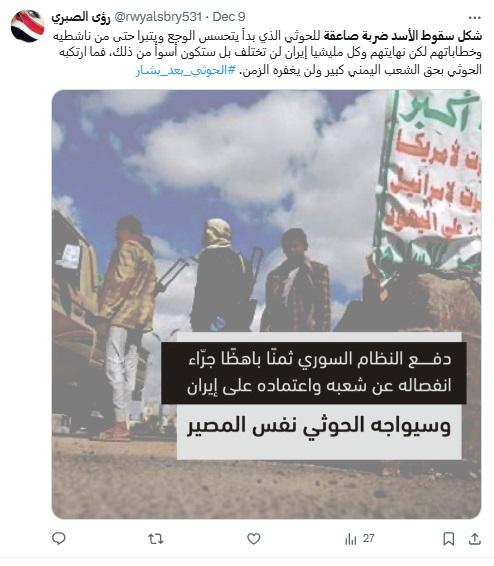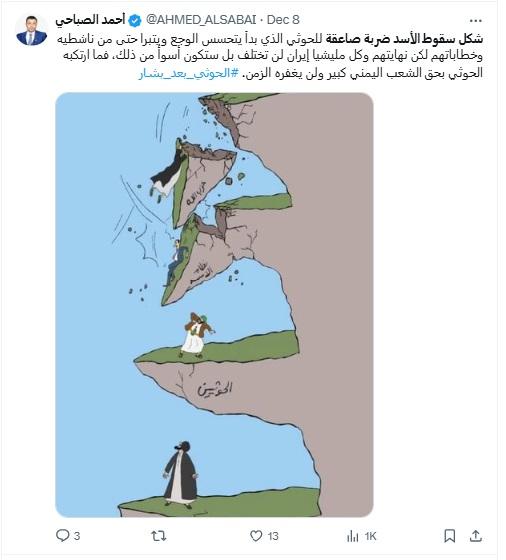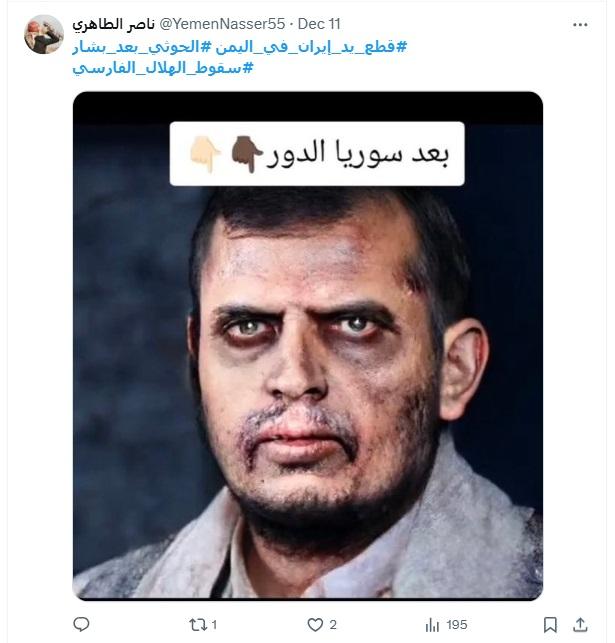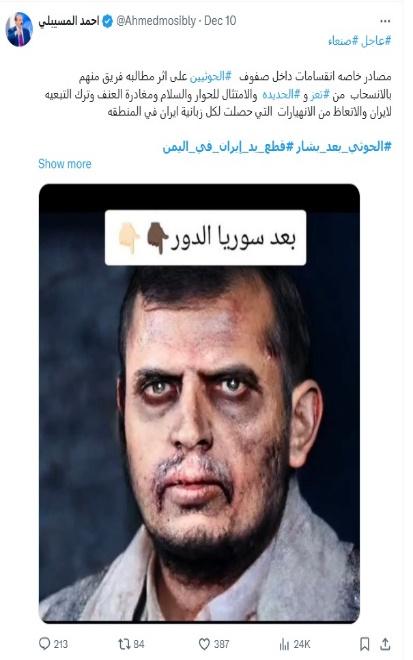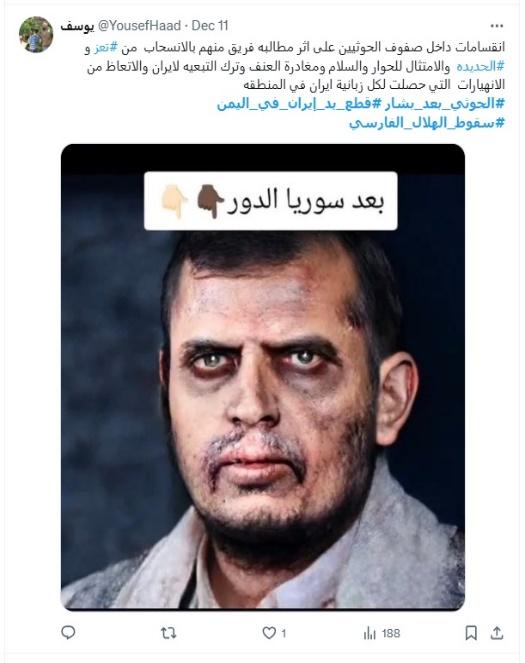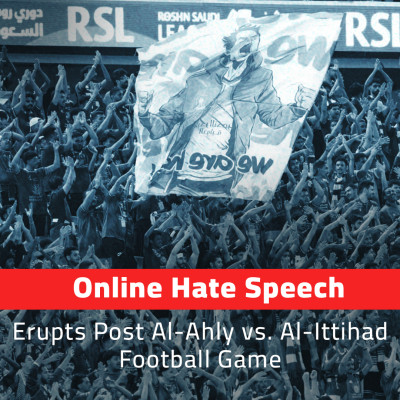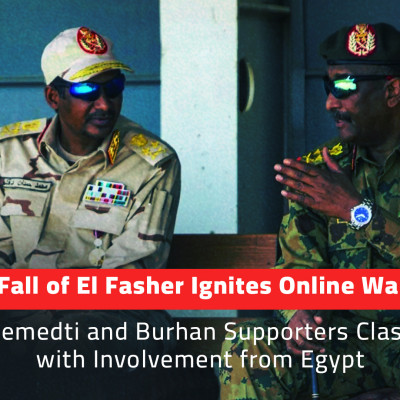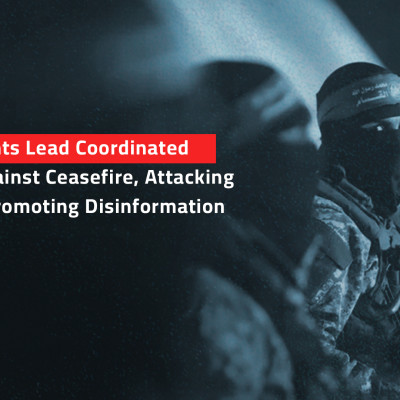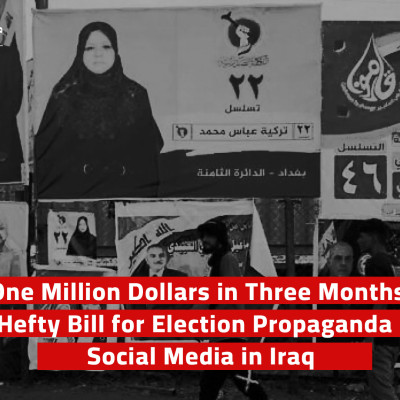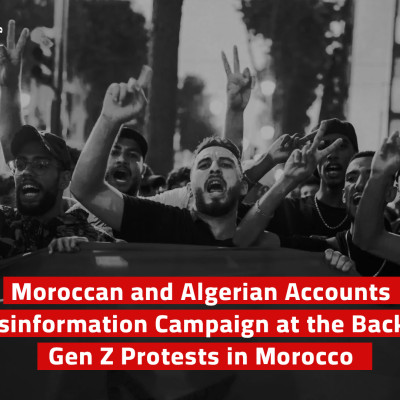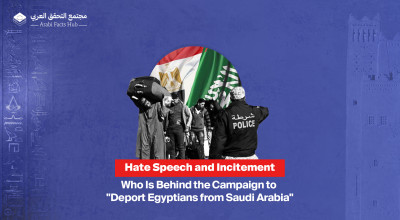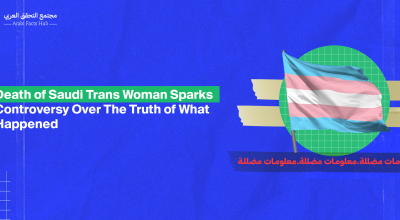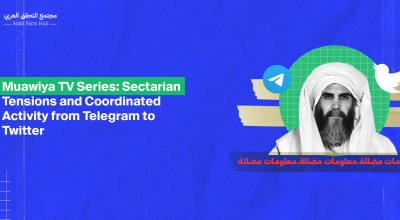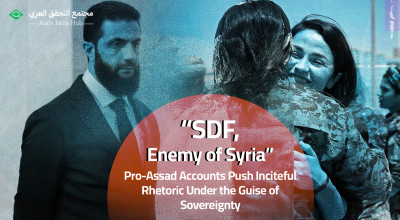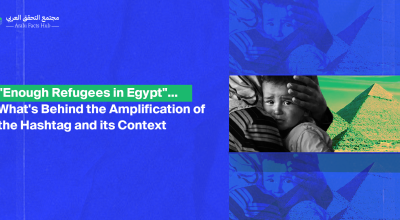A Coordinated Online Campaign Against the Houthis in Yemen Warns of an "Assad-Like" Fate
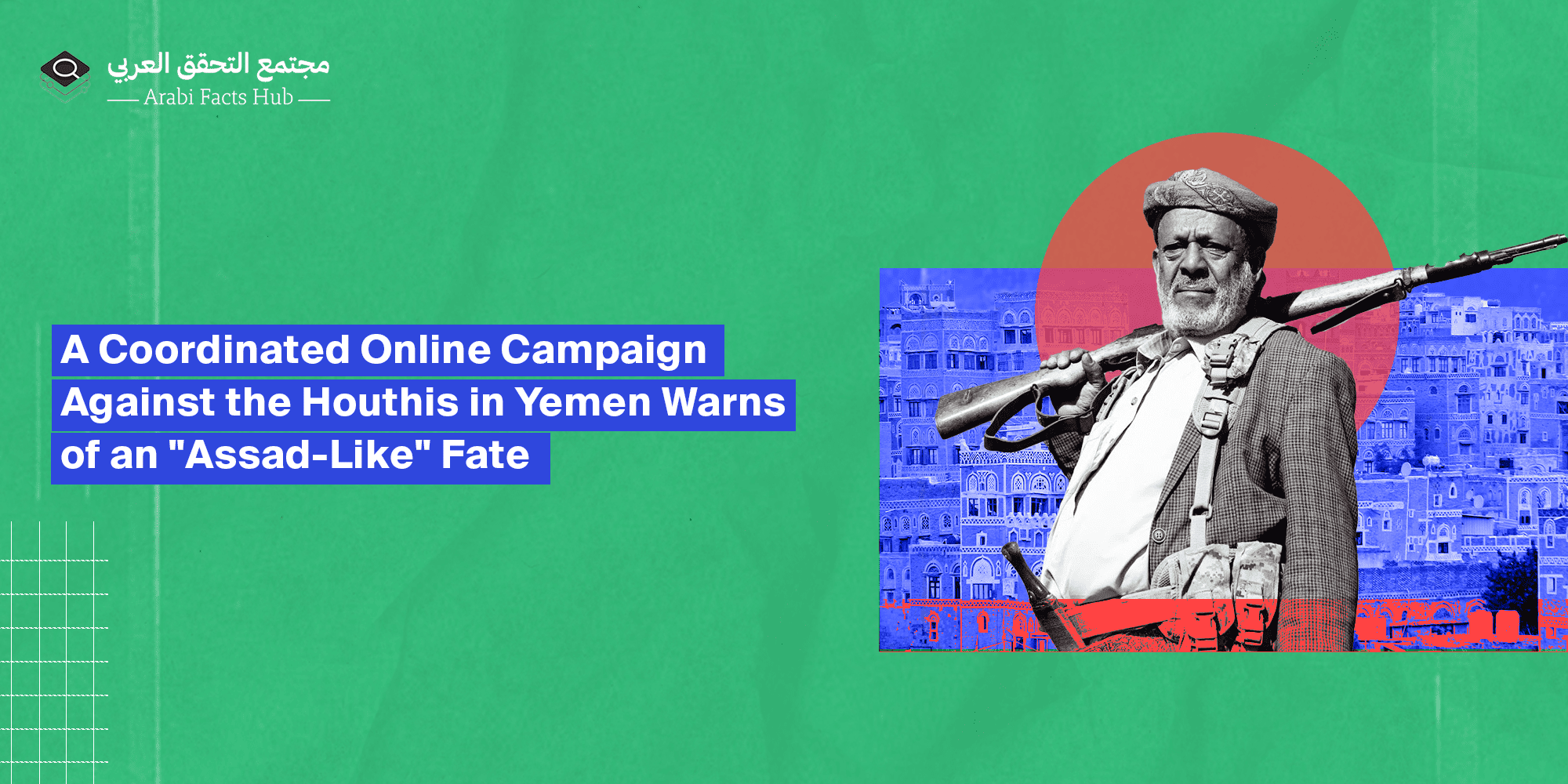
Following the collapse of Syrian President Bashar Al Assad’s regime, opponents of the Iran-backed Houthi group launched a coordinated online campaign promoting the idea of the “fall of the Persian Crescent.” The campaign was driven by virtual coalitions with a history of organizing political propaganda, mobilization efforts, and orchestrated online campaigns.
As Bashar Al Assad counted his final hours in Damascus, with opposition factions closing in on the capital at dawn on Sunday, December 8, 2024, an active Yemeni propaganda mobilization campaign emerged, expressing aspirations to overthrow the Houthi group, inspired by the potential collapse of the Syrian regime.
Between December 7 and December 24, 2024, this mobilization was prominently visible on the platform "X" in two consecutive, highly organized waves. According to statistics from Meltwater, a leading social media analytics firm, more than 135,000 posts were recorded, averaging 5,600 posts per day.
The campaign centered around hashtags such as: #الحوثي_بعد_بشار (Houthis Follow Bashar), #قطع_يد_إيران_في_اليمن (Sever Iran’s Hand In Yemen), #سقوط_الهلال_الفارسي (#Fall Of The Persian Crescent), #تحرير_صنعا_مطلب_وطني / #تحرير_صنعاء_مطلب_وطني (Liberating Sanaa Is A National Demand), #الحسم_العسكري_مطلب_يمني (Military Action Is A Yemeni Demand), and #Wont_Forget_Houthis_Crimes.
Content on the hashtag was viewed more than 30.7 million times, with an additional potential reach estimated at 17 million views. This activity generated 463,000 interactions, including likes, retweets, replies, and comments.
”
Content on the hashtag was viewed more than 30.7 million times, with an additional potential reach estimated at 17 million views. This activity generated 463,000 interactions, including likes, retweets, replies, and comments.
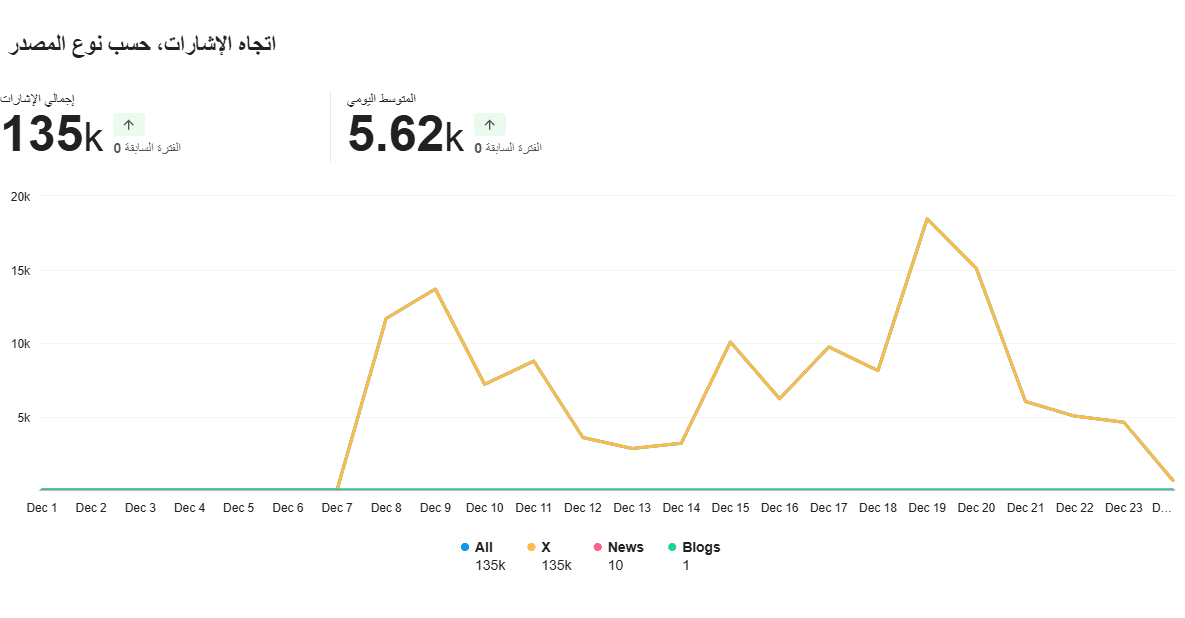
Periods of Activity for Anti-Iran and Anti-Houthi Hashtags in Yemen – Meltwater
Who Is Behind the Campaign?
Tens of thousands of accounts took part in the coordinated virtual mobilization against Iran and its affiliate in Yemen, totaling 30,849 accounts. Large Yemeni and Saudi accounts with significant followings played a key role in amplifying the campaign and sustaining the visibility of the hashtags long after the fall of the Assad regime.
Primary participants in this virtual mobilization were supporters of the "Republic," including loyalists of former President Ali Abdullah Saleh and backers of his nephew, Tareq Saleh, the Vice President of the Presidential Leadership Council and leader of the so-called "National Resistance." Additionally, accounts advocating for the separation of South Yemen from the North and prominent Saudi accounts were also active.
Many of the accounts involved in this campaign had previously participated in coordinated online campaigns throughout Yemen’s prolonged conflict—described by the UN as the world's worst humanitarian crisis. They have also been engaged in political propaganda efforts for influential states and leaders, particularly Saudi Arabia and the UAE.
Most of the influential accounts in these hashtags feature profile images of Saudi Crown Prince Mohammed bin Salman, as well as nationalist slogans such as “Great Saudi Arabia” and “Long Live Our Nation.”
These accounts, particularly the Yemeni ones, included journalists, media figures, and social media influencers, as well as former and current officials within the Presidential Leadership Council, which is backed by Saudi Arabia and based in Aden since the Yemeni government was expelled from Sana'a by the Houthis a decade ago.
Virtual coalitions played a significant role in amplifying the messages of various conflict parties on social media. Among them was the "National Media Front," a network of accounts—both real and fake—owned by influencers and public figures, working in coordination to promote propaganda narratives.
”
Virtual coalitions played a significant role in amplifying the messages of various conflict parties on social media. Among them was the "National Media Front," a network of accounts—both real and fake—owned by influencers and public figures, working in coordination to promote propaganda narratives.
The account Hadeel Ahmed (@hedeel36) emerged as one of the key leaders of this virtual coalition, playing a significant role in the analyzed hashtags.
In addition to being heavily involved in organizing and coordinating online campaigns, the account primarily engages in propaganda supporting Ahmed Ali Abdullah Saleh, the son of Yemen’s former president, and his cousin Tariq Saleh, who is backed by the UAE and Saudi Arabia.
Created in July 2015, the account has posted 25,000 tweets and describes its role in its bio as being dedicated to "supporting and activating accounts."
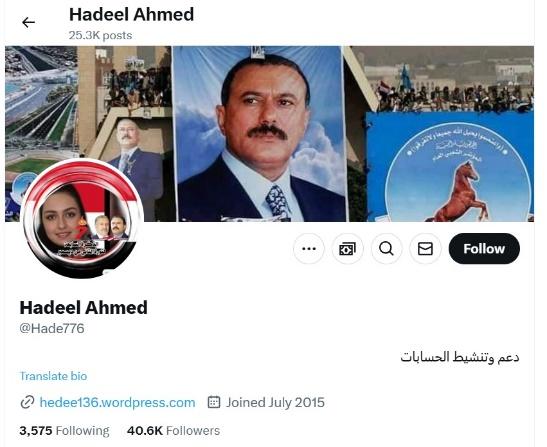
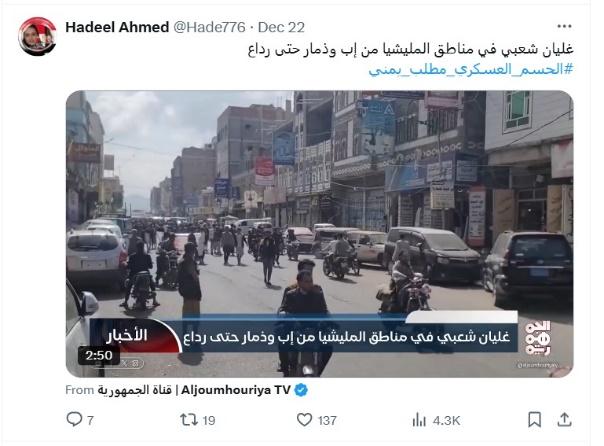
Yemeni Minister of Information Moammar Al Eryani and his advisor Ahmed A Musibli were active participants in the hashtags.
Al Eryani called for a "major media campaign" scheduled for a specific date, aiming to "expose the crimes of the Iran-backed Houthi militia, which are no less horrific than those witnessed by the world in Syria," according to his tweet on December 15, 2024.
He designated two hashtags for the campaign: #لن_تنسى_جرائم_الحوثي and #Wont_Forget_Houthis_Crimes.
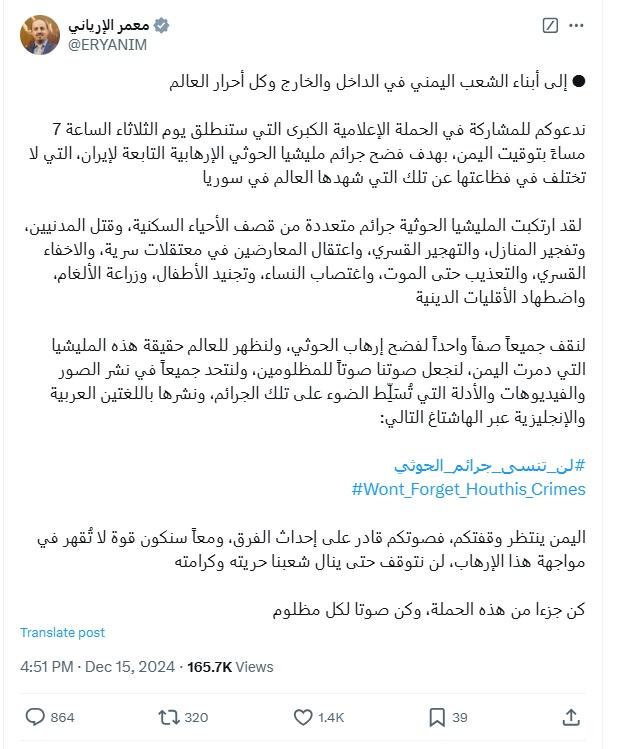
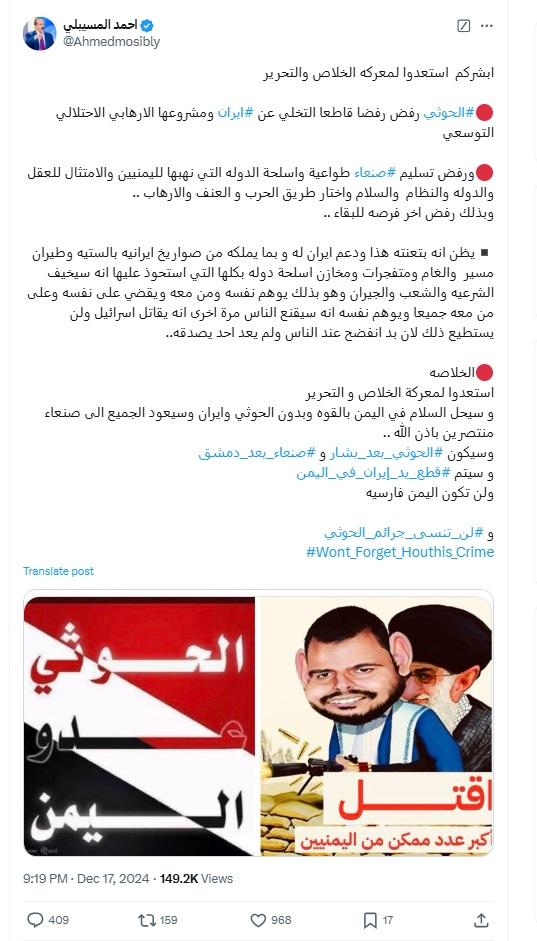
Moreover, several Yemeni news networks have emerged, often adopting an editorial stance opposed to the Houthis. One example is the Ejaz network, which Arabi Facts Hub has documented as participating in multiple online campaigns. This trend marks a significant development in the Yemeni media landscape, where outlets on both sides of the conflict engage in coordinated digital activities.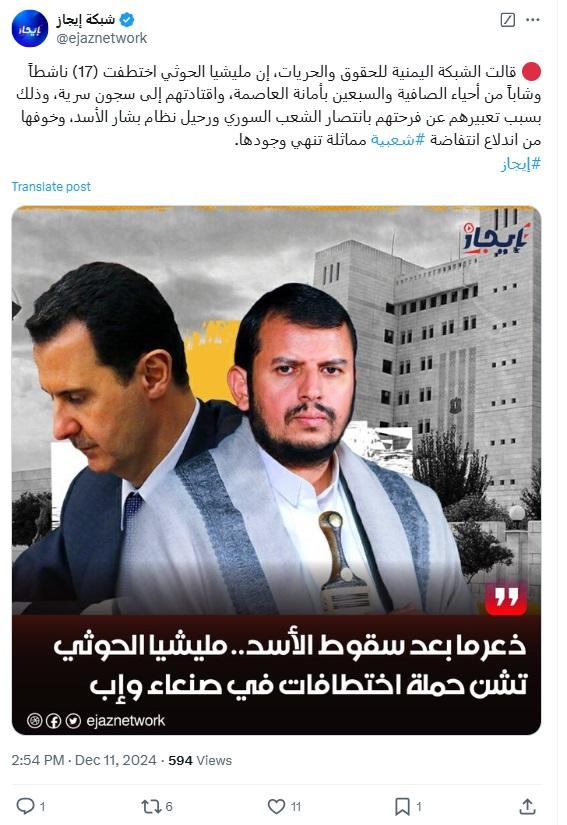
Parallel Virtual Mobilization Alongside Ground Battles
With the collapse of the Syrian regime, calls intensified in Yemen for a "battle to restore the state" or seize control from the Houthis. Amid U.S. airstrikes and Israeli threats to retaliate against Houthi drone and missile attacks, ground battles—though still limited—continued in Ma’rib and Taiz.
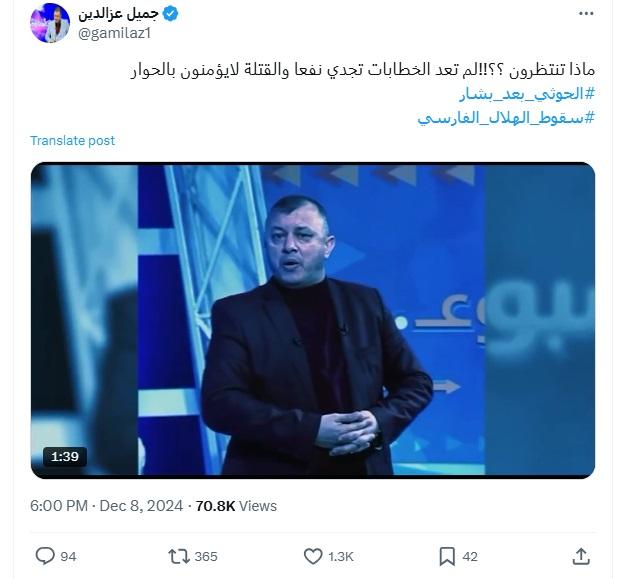
This was accompanied by extensive virtual mobilization, featuring hashtags from the ongoing campaign calling for the "cleansing" of the country from the Houthis and the "Persian project." The campaign involved resurfacing incidents and videos documenting the group's violations throughout the years of the Yemeni crisis, with a particular focus on their secret prisons, drawing comparisons to the notorious Sednaya Prison in Syria. Additionally, there was widespread promotion of the idea that Houthi leader Abdul-Malik Al Houthi could face a fate similar to that of Bashar Al Assad.
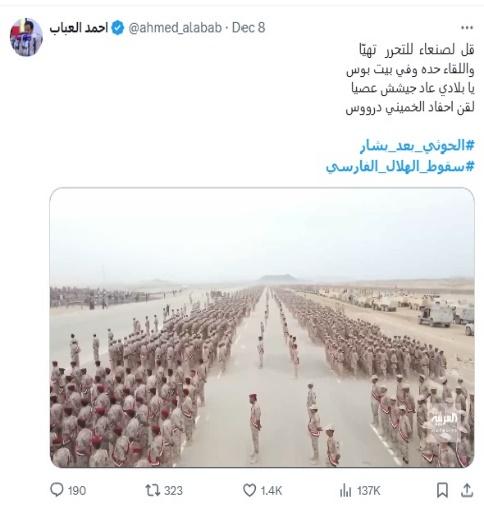
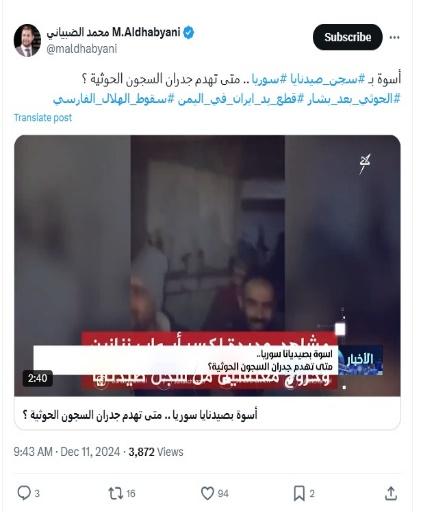
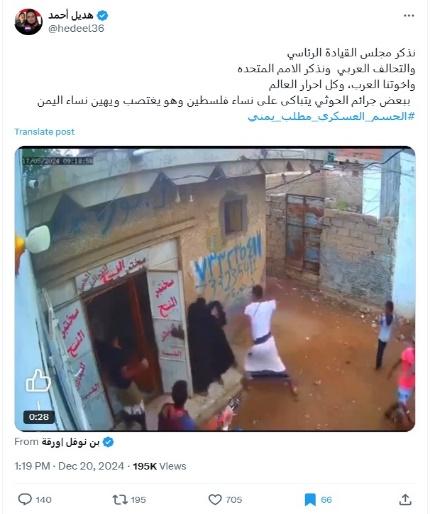
Campaign accounts further highlighted statements from military officials predicting an imminent victory over the Houthis, including remarks by Tareq Saleh.
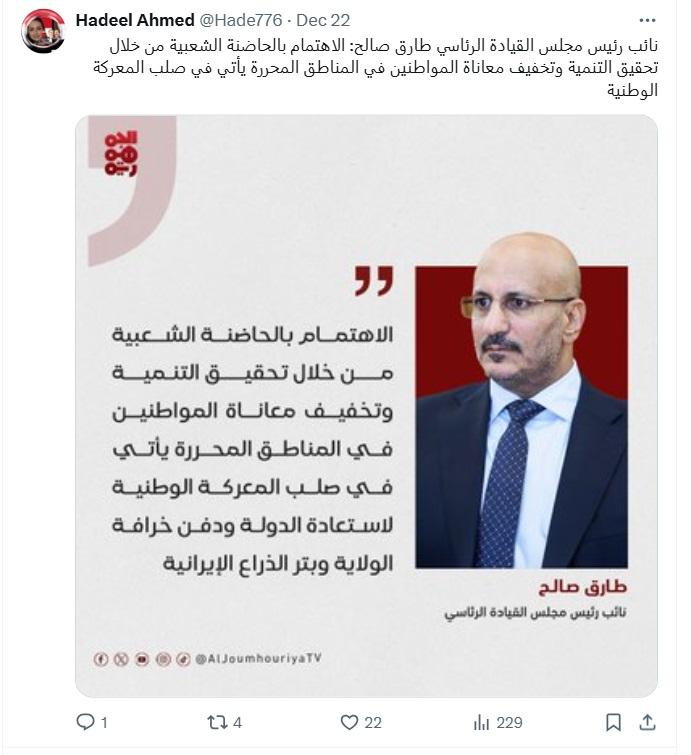
The campaign also included posters and posts in English reflecting the content of the hashtags. These were shared by participating accounts in an effort to expand virtual mobilization and convey the campaign's messages to a global audience.
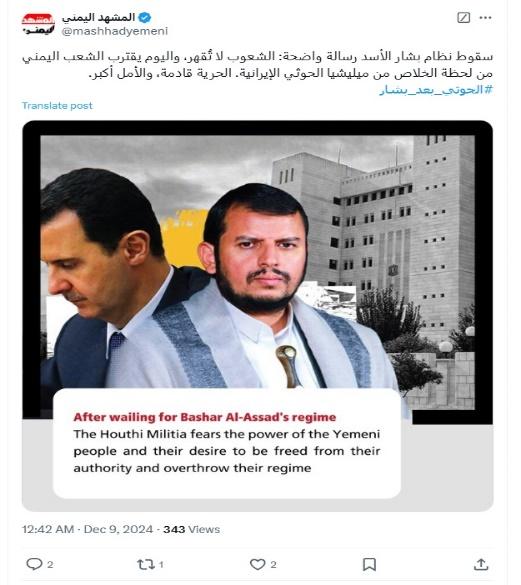
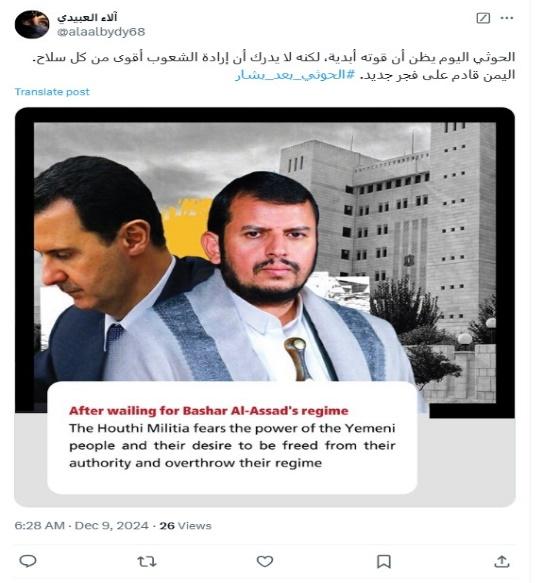
Saudi accounts also used the campaign’s hashtags to promote Saudi Arabia’s role in Yemen and Crown Prince Mohammed bin Salman, while discussing “preparations to overthrow the Houthi regime.” This narrative was echoed in a video posted by the account @S50550_, which features an image of King Salman bin Abdulaziz and the Saudi emblem in its profile. The account presents itself as a “social media influencer.”
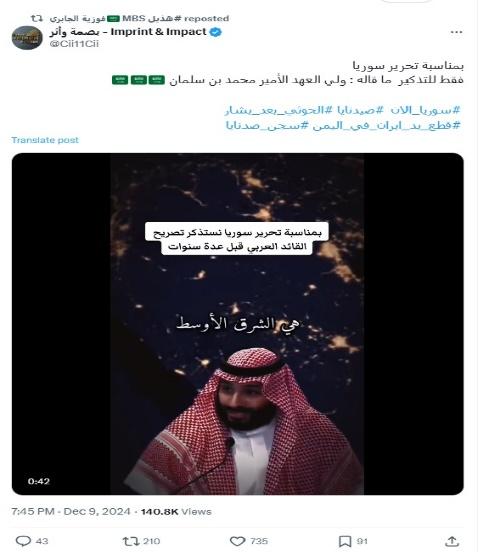
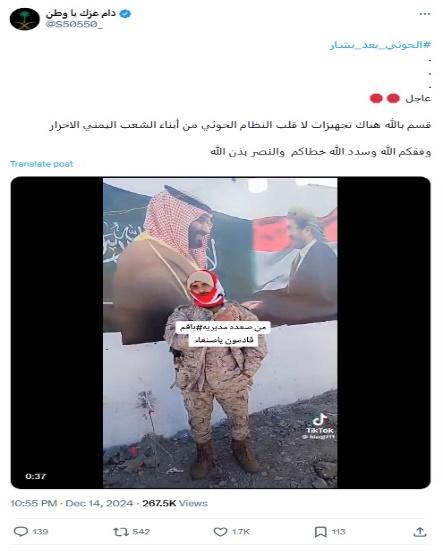
During the campaign, archival footage and misleading information circulated, including videos claiming that Yemeni forces were moving toward the coastal city of Hudaydah on the Red Sea to join military formations and fight the Houthis.
However, it was later revealed that some of these videos were not filmed in Yemen. In fact, some dated back to early December 2024 and depicted unverified footage of Iraqi forces allegedly moving toward the Syrian border.
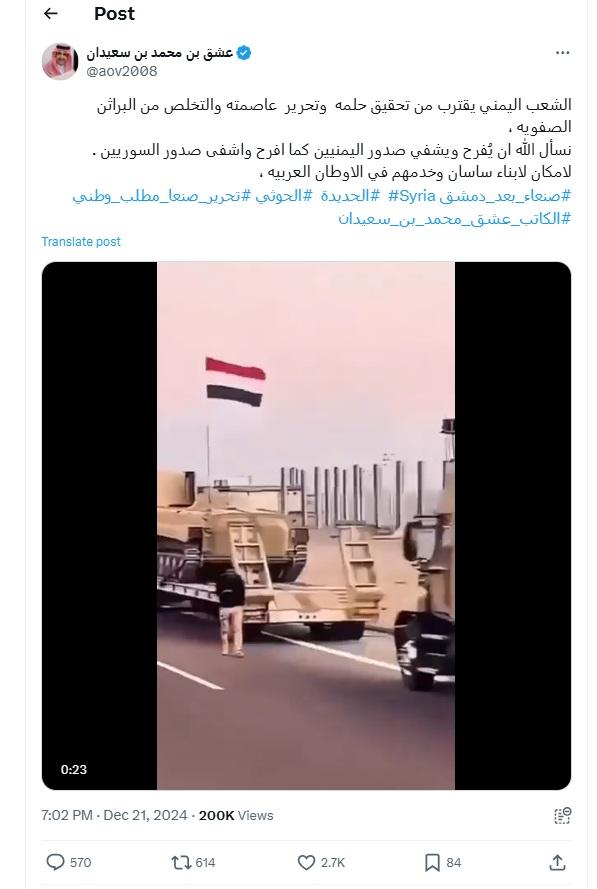
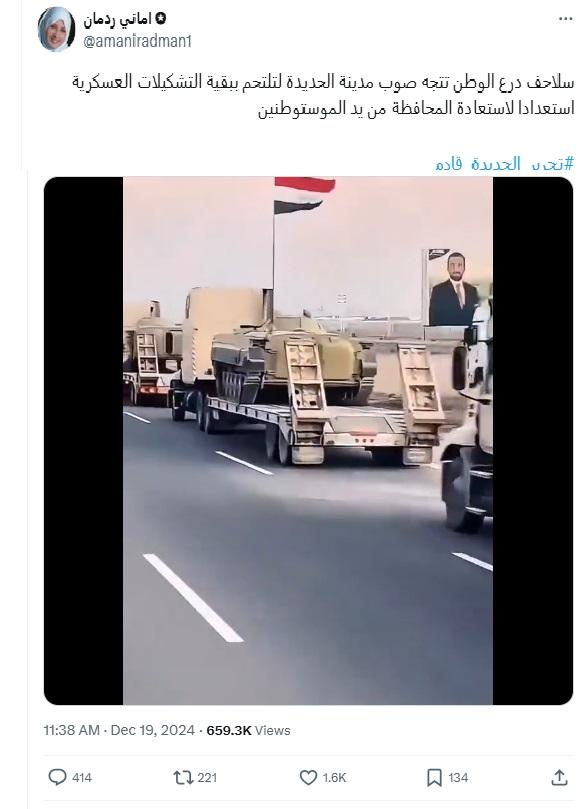
Repetitive Content
Arab Facts Hub identified several indicators suggesting a coordinated effort behind the campaign’s hashtag activity, such as repeated content in both visual and textual formats.
For instance, searching for any part of the following text on X reveals multiple posts using the exact same wording, often accompanied by identical footage. This practice is common in organized campaigns launched in Yemen by groups like the Yemeni Media Front and virtual networks affiliated with the Houthis.
These networks prepare campaign content in advance using what is known as a "tweet bank," where pre-written texts and media are stored and later disseminated in a coordinated manner. They also rely on fake accounts, which play a crucial role in inauthentic activities within Yemen's digital space.
The presence of such fake accounts was particularly noticeable in the campaign’s early posts. Many of these accounts had very few followers, were created recently—especially in June and August 2023—and showed high activity on specific issues without engaging in direct interactions like replies or comments.
